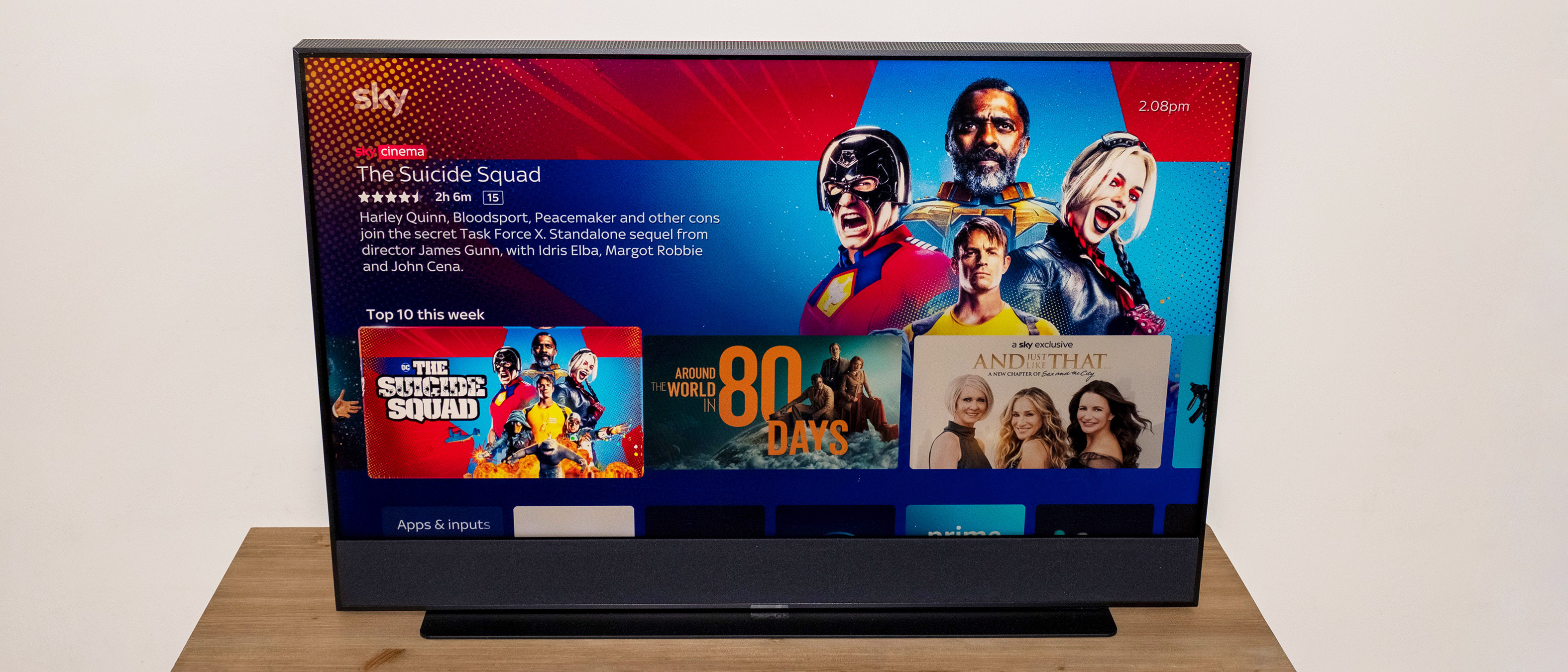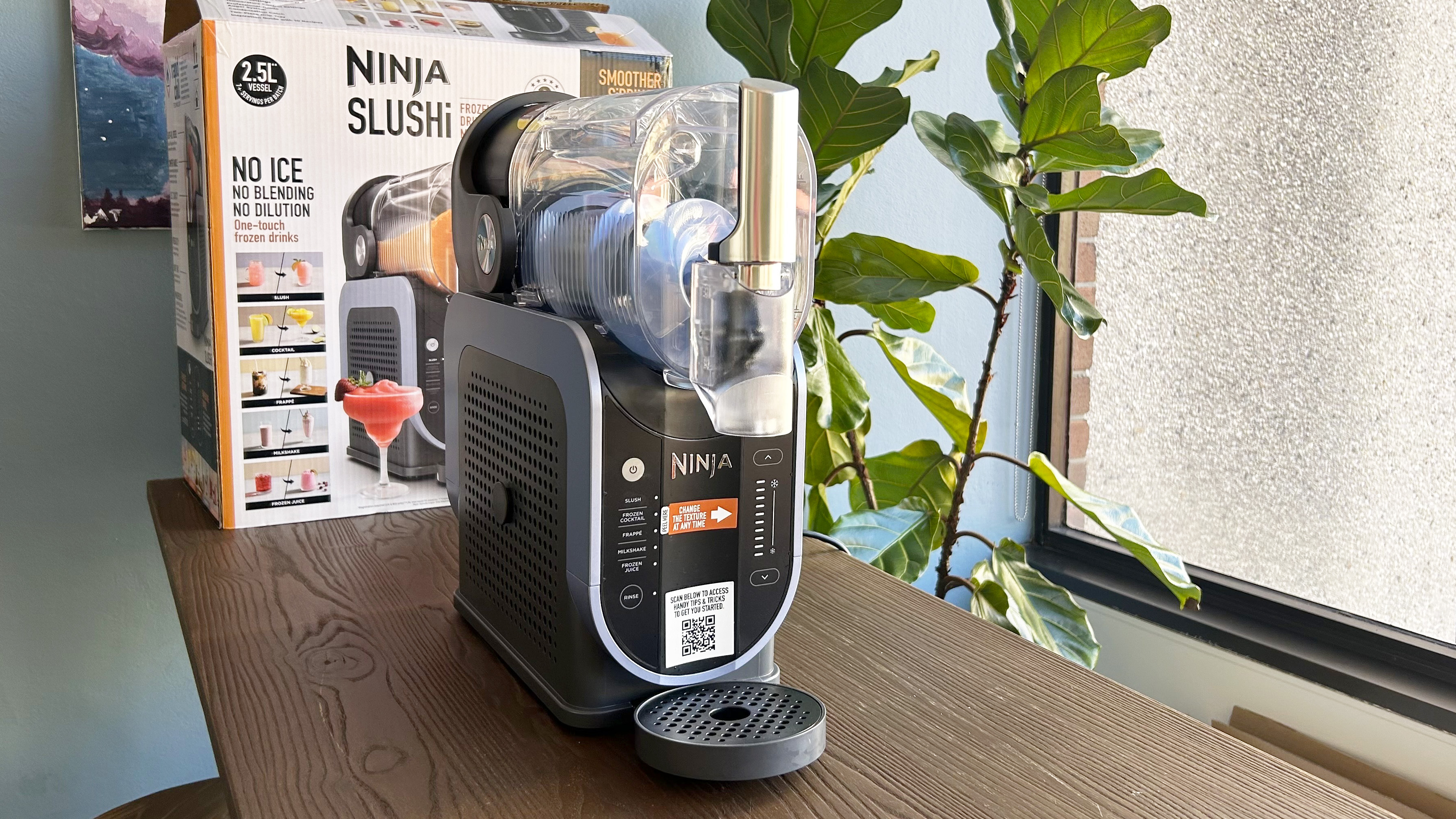Tom's Guide Verdict
Sky Glass represents an ambitious integrated vision for the future of TV, but it doesn’t always deliver where it matters. There’s lots to like about it, and as a one-cable solution it excels, but some people will find a separate TV and streaming device to be a better solution.
Pros
- +
Good sound
- +
Great interface
- +
One-cable-solution
- +
Well priced
Cons
- -
Bulky design
- -
Muted colours
- -
No DVR capability
Why you can trust Tom's Guide
Price: 43in: £649 / 55in: £849 / 65in: £1,049
Screen size: 43in (tested), 55in, 65in
Resolution: 4K (3840x2160)
HDR: Yes (HDR 10, HLG, Dolby Vision)
Refresh rate: 60Hz
Ports: 3x HDMI 2.1 eArc, USB-C (power only), DTT DVB-T/T2, Ethernet
Audio: 3x outwards-firing speakers, 2x upwards-firing speakers, 1x subwoofer, Dolby Atmos, 215W
Smart TV software: Sky Glass UI
Size: 43in: 96.25 x 63.69 x 21.1cm / 55in: 123.09 x 78.89 x 24.8cm / 65in: 144.98 x 91.20 x 28.8cm (with stand)
Weight: 43in: 19kg / 55in: 28kg / 65in: 35kg (with stand)
Sky Glass is potentially the biggest revolution in U.K. TV in years. A 4K HDR television set with a built-in Dolby Atmos soundbar, it not only offers the Sky TV experience without the need for a satellite dish or cable box, but also introduces a new interface that could change how you watch the telly. Oh, and it can be paid for via an innovative subscription plan, too.
In short, it promises to shake up the U.K. public’s viewing habits in the way that Sky first did when it launched as a service in 1989 and then again when it introduced Sky+ in 2001.
Of course, promising a lot is one thing — the big question is whether Sky Glass actually delivers when it comes to picture and sound quality, and whether its streaming-based platform offers any advantage over a standard Sky Q setup.
After living with it for a couple of months, I’m mostly impressed — but with a few caveats. Find out what I like and don’t like about it in my full Sky Glass review.
Note: Tom’s Guide’s TV reviews are typically conducted in the U.S. using specialised testing equipment. However, as Sky Glass is a U.K.-only product we have not followed the same process here.
Sky Glass review: Price and availability
Sky Glass is available to buy in the U.K. right now in three screen sizes: 43 (S), 55 (M) and 65 inches (L). They all have the same specification, so you’ll get the same experience no matter which screen size you choose.
If you choose to buy the set outright, it will cost you £649 (43), £849 (55) or £1,049 (65). However, Sky is also offering the option to pay as part of a monthly Sky subscription, in the same way as you would a mobile phone contract.
If you’re reading this outside of the U.K., you might not know what Sky is — which is fair enough, as it’s mainly a player in the U.K. and Europe. Sky provides broadband, mobile and cable TV services, makes streaming boxes and has dozens of its own channels. It also offers original programs, and broadcasts most big sporting fixtures in the U.K.
You can pay for your TV over a 24- or 48-month contract, with prices starting at £13/month for the 43-inch set, £17/month for the 55-inch model and £21/month for the 65-inch version. The cost of your chosen Sky subscription goes on top of that, with the Sky Ultimate TV package coming in at £26 a month (with Netflix included).
You’ll have to pay an extra £5 per month for Sky Ultra HDR and Dolby Atmos, plus further uplifts for Sky Sports (£25p/m), BT Sports (£24p/m), Sky Cinema (£11p/m) and Sky Kids (£5p/m). So if you wanted everything on offer, on the biggest set, you could be looking at more than £100 per month.
The good news is these are all on rolling 31-day contracts, so you can adjust your contract to suit your needs every month. What’s more, you’ll be able to upgrade your TV as and when a new set becomes available, just as you would your mobile phone.
Sky Glass review: Design
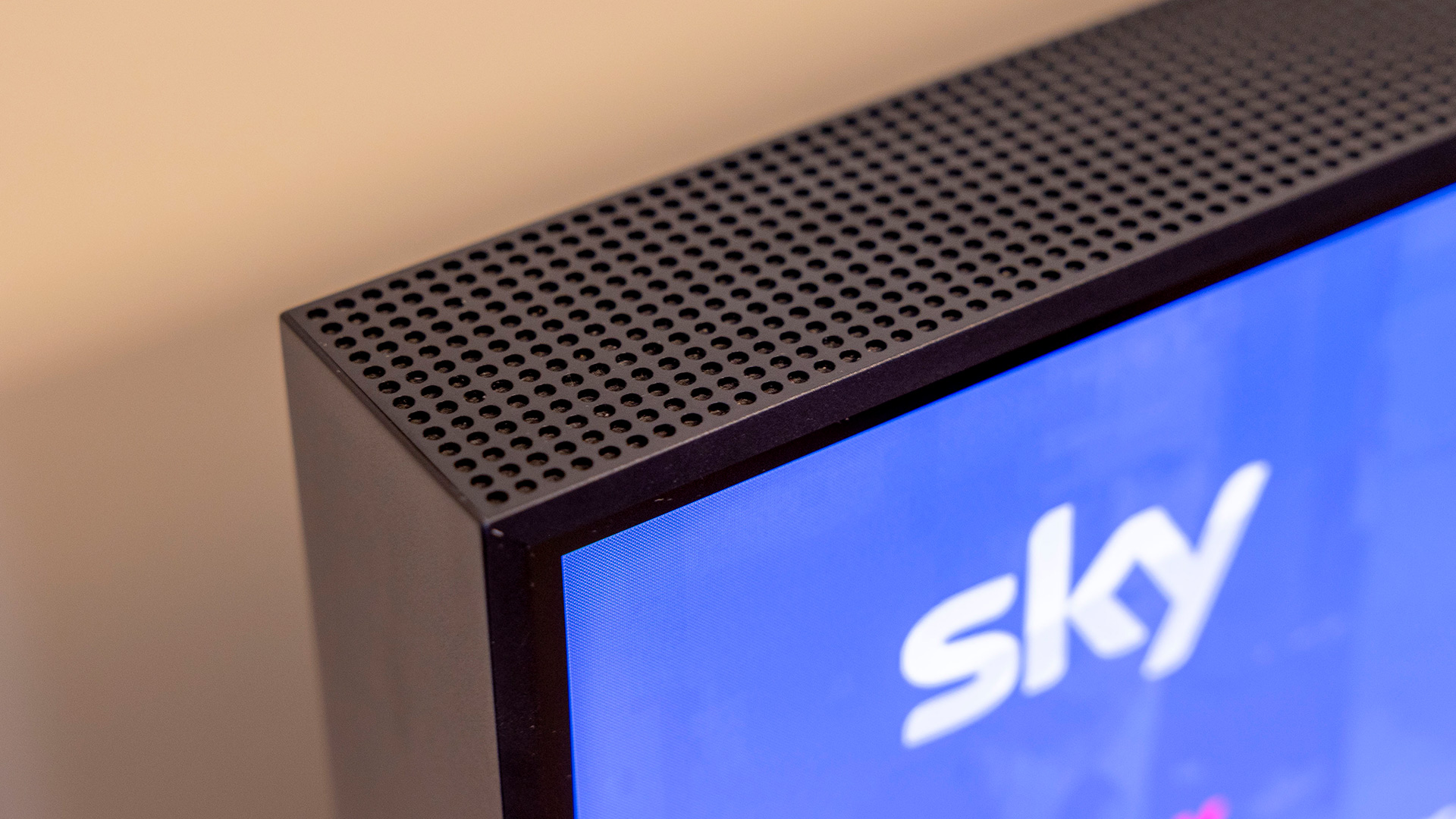
Sky Glass is a decent looking television set, but don't expect a wafer-thin frame as seen on the best 4K TVs such as the LG C1 or Sony A80J. Instead, it's a decidedly boxy thing that looks like something of a throwback in 2022. That’s understandable, given it has to fit a Dolby Atmos soundbar with six speakers inside, but the net effect is more utilitarian than artwork.
There’s a built-in wall mount, or it can be set up on the clever stand that makes it look like it’s balanced on its bottom edge. The frame is crafted from anodised aluminium and is available in five colours — Ceramic White, Dusty Pink, Ocean Blue, Racing Green or Anthracite Black; the stand and speaker grille can also be customised to match your choice. My test unit was the simple black model, but according to Fraser Stirling, Sky’s Group Chief Product Officer, the more colourful versions have proved massively popular.
Set up is incredibly easy: you connect to your Wi-Fi or hook up via Ethernet, plug in and that’s it. It’s genuinely a one-cable solution (if you go wireless at least), giving you a wealth of content with minimum fuss and no need for multiple streaming devices or remotes. That said, you do also get three HDMI 2.1 ports, so it’s easy to hook up a PS5 or Xbox Series X, or one of the best streaming devices, should you want to.
Sky Glass review: How does it work?
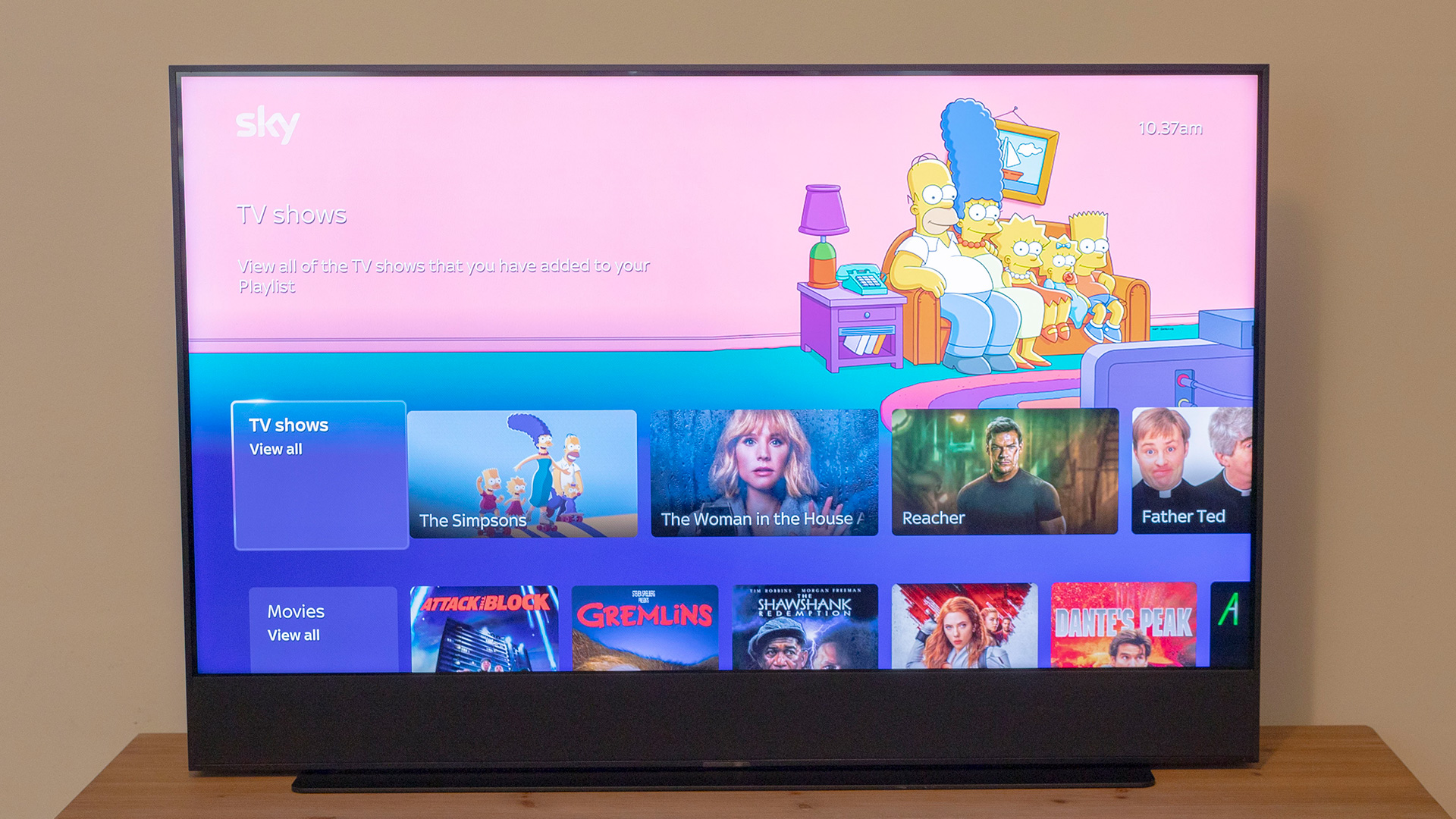
Sky Glass is an entirely streaming-based experience that requires a little explanation.
Essentially, it takes content from the cloud and serves it up on demand — it’s not coming via a satellite dish or cable. However, that side of things alone is incredibly impressive; there’s almost no buffering or delay in switching from BBC One to ITV, and you wouldn’t guess it wasn’t coming from a Sky Q box.
Most of the channels you’d usually have access to via a Sky dish are available, but a couple are missing here; you’ll want to check Sky’s list in case one of your favourites is absent. These channels are then combined in a unified view with content from any streaming services you subscribe to, for instance Netflix and Disney Plus.
It’s a versatile setup that gives you huge amounts of content at your fingertips, without the need to jump into separate apps all the time. But it does have one obvious drawback over a hardware box — namely that there’s no DVR functionality.
Sky Glass’ solution is to let you ‘Favourite’ shows via a single click, which then adds them to your Playlist for easy later retrieval. Sky still calls this ‘Recording,’ but clearly it’s not: it’s really no more than a bookmark to the on-demand content in question. And therefore, if your Playlisted show disappears from iPlayer or wherever before you watch it, you’re stuck.
Another drawback is that you can’t always rewind live TV or start shows from the beginning. Sometimes you can, but sometimes you can’t and I haven’t yet been able to find a pattern. Trying it on a random Sunday afternoon, I was able to flick over to shows on Channel 4, 5, E4, Sci-Fi and MTV and have the option to watch from start — but not on BBC, ITV, Nat Geo or Gold. Some Sky Sports channels let me watch from the start, others didn’t.
It’s probably related to rights issues and is an understandable restriction, but it does jar somewhat, given Sky Glass is all about providing an integrated experience.
Sky Glass review: User interface
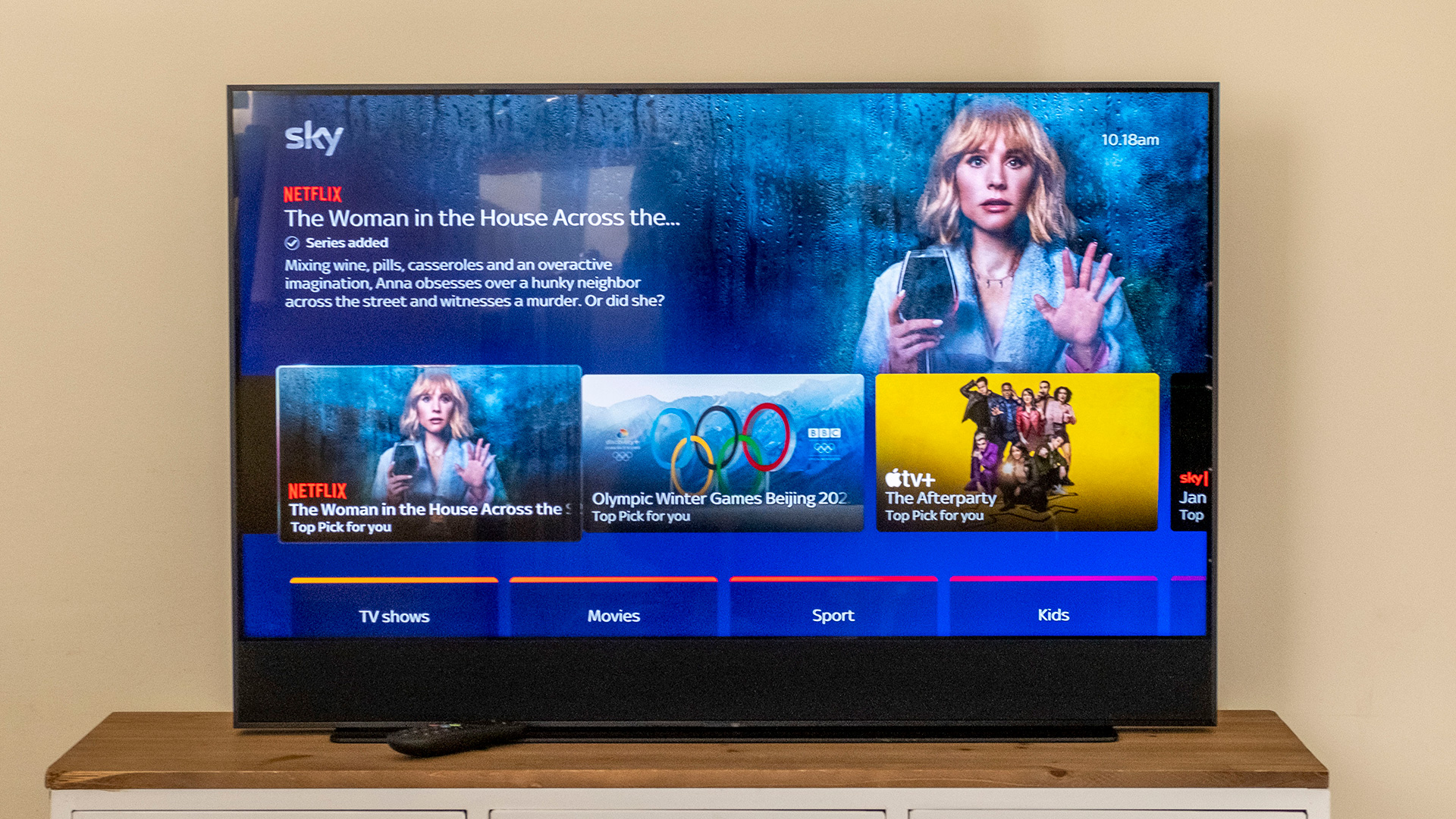
Sky Glass’ new UI is one of its big selling points, and after spending a few months with it, I’m hooked. It does a super job of integrating multiple apps and services, giving you a much more unified view of what’s available than most platforms, including the ones I use most of the time, namely Roku and Samsung’s Tizen.
Turn the TV on and you’ll be greeted by around a dozen suggestions for things you might like. These are taken from multiple sources, so you’re just as likely to see stuff from Apple TV Plus or Peacock as you are from Sky or BBC — so long as you subscribe to those services. Because it learns from your use, it’ll skew towards services or genres that are likely to appeal to you, and I’ve found it regularly suggests things I was genuinely planning to watch.
Scroll down and you’ll get options for TV Shows, Movies, Sport, Kids and more, plus a TV guide showing you what’s on right now, your Playlist, Top 10 this week, apps, games and a bunch of carousels showing category-specific content (ie Must-see Movies and Sky Originals). But despite the wealth of choices, it never feels overwhelming and it’s pretty easy to find what you’re looking for.
Sky Glass review: Remote
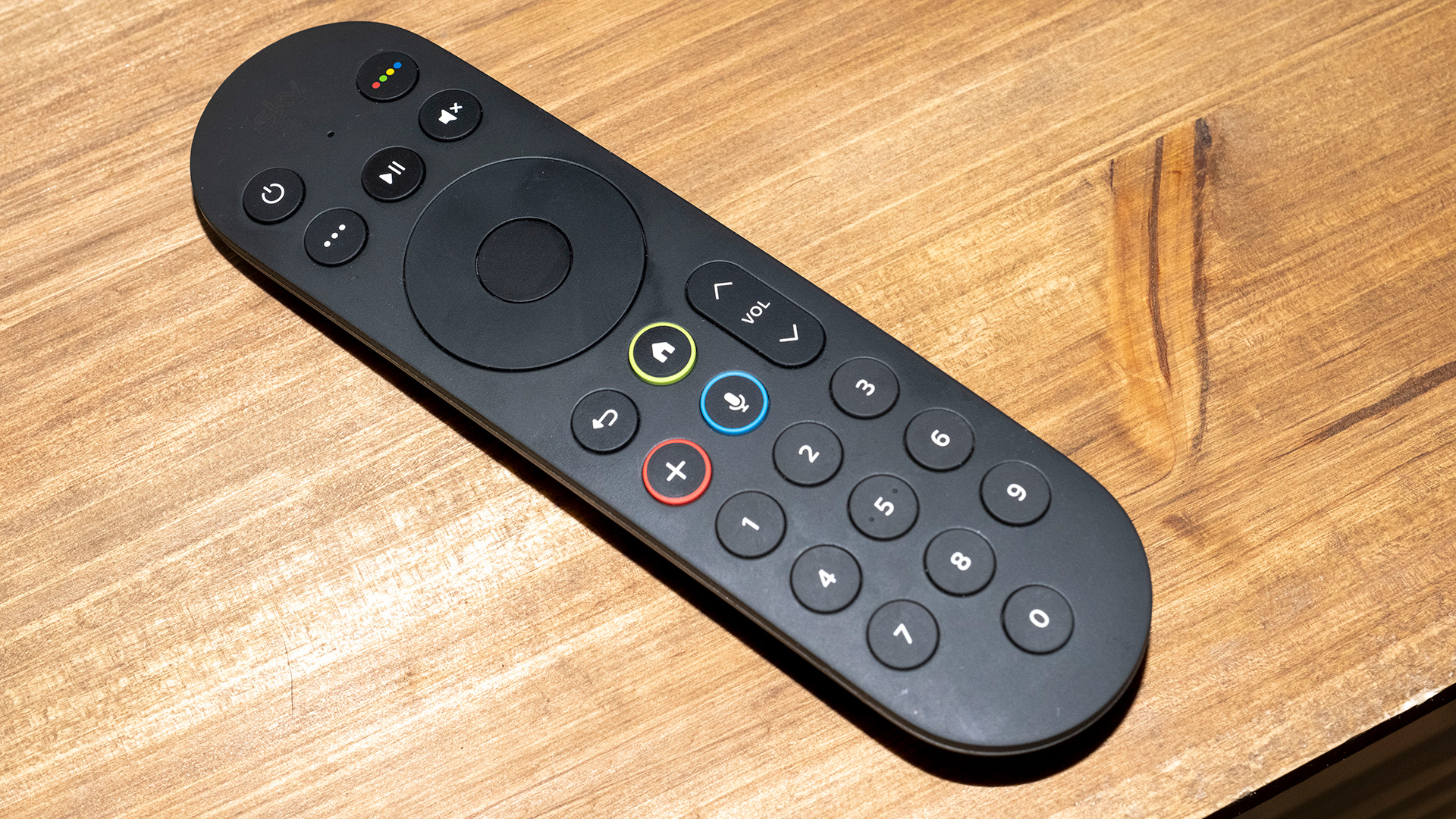
The Sky Glass remote is a good one. It’s on the large side, but that just makes it easy to find, while the curved base and soft-touch finish make it pleasant to hold. It runs on two AAA batteries, which is a bit of a shame in these days of solar-powered or USB-equipped remotes, but that’s a minor complaint. The buttons are big and well-spaced-out and there are Home, Back and Mute options plus one that brings up a quick menu whatever screen you’re on, with subtitle, search and settings shortcuts.
The keys are backlit and light up when you pick up the remote, plus there’s also a microphone button, which you can hold down if you want to speak to Sky Glass — although you can also just use the wake word. Speaking of which…
Sky Glass review: Voice control
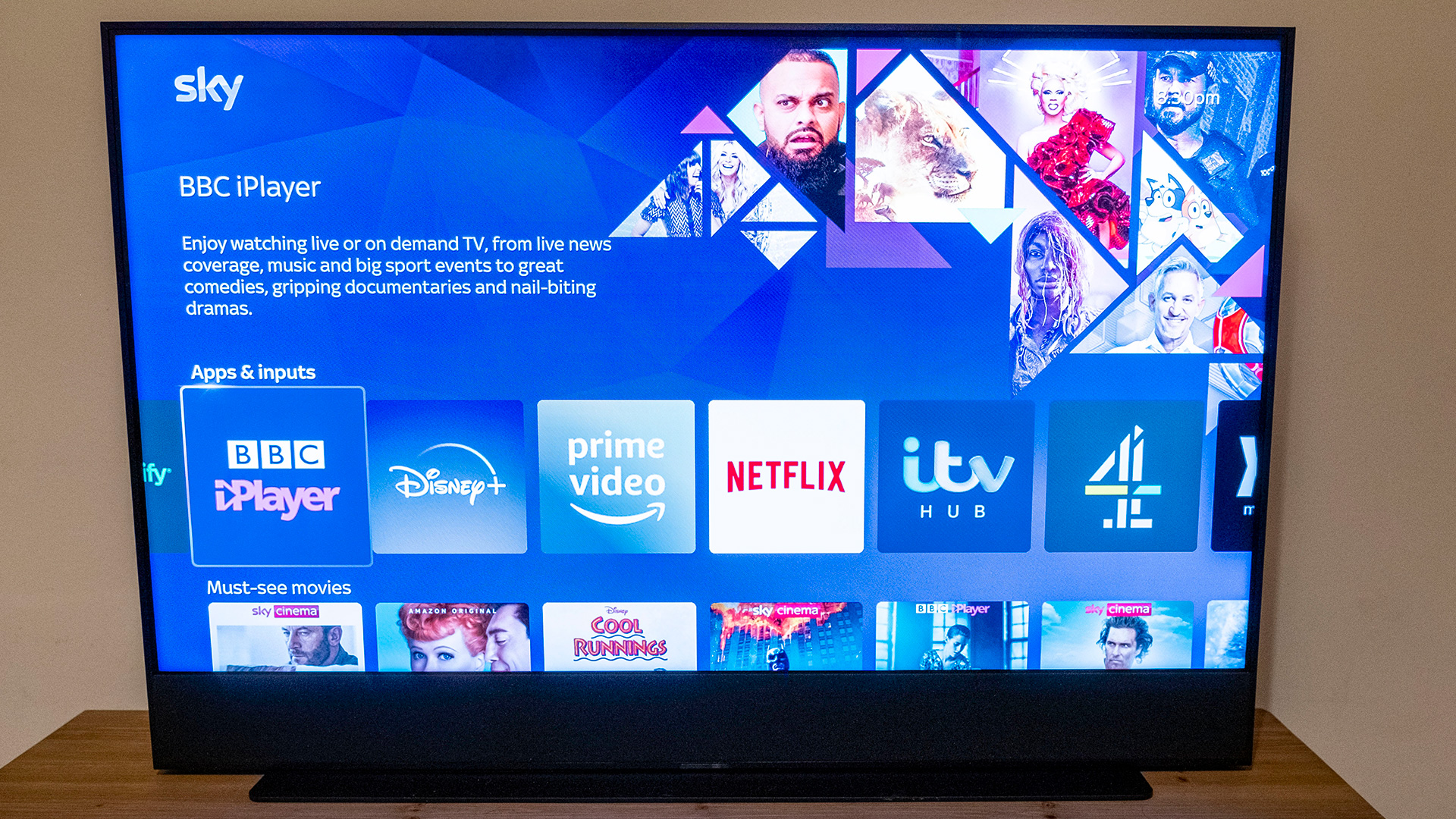
Voice control has been a big part of the Sky experience for a decade and is now a tried and tested way of controlling your device. It’s Sky’s own tech — there’s no Alexa or Google Assistant here — which Stirling told me is a deliberate choice: Sky now has masses of data about how people use voice to control their TV devices and about shows and movies; it doesn’t need information about where the nearest Japanese restaurant is. Voice control here is for one thing only, and it mostly does a very good job with it.
There are two ways to activate it: either press the mic button on the remote and speak while it’s held down or say “Hello Sky.” Either way, it works unerringly well, even when there’s quite a lot of noise in the room.
In use, voice control on Sky Glass is clever and versatile — with a few key exceptions. You can use it to jump to your Playlist or go Home, search for a specific show, control what you’re watching, set the volume and many more things. Being able to, for instance, say “forward 10 minutes” can be very helpful and is a lot easier than doing so via the remote.
Search is also excellent, serving up spot-on results whatever you ask it for. Plus, it will do more than just find specific shows such as Stranger Things or services such as Netflix. Say “Arnold Schwarzenegger” or “cartoons,” for instance, and it will still know what you’re asking and give you some options. Plus, because all of your services are integrated, it will search across all of them — the aforementioned “Arnold Schwarzenegger” request brought up films and shows on Sky Cinema, Disney Plus, Amazon Prime Video, Netflix and BBC iPlayer.
However, there are limits to its effectiveness. Voice control will take you to what you want, but it can’t be used to control content that’s on a dedicated app — which is most things outside of Sky’s own services. So, if you’re watching on iPlayer, Netflix or Disney Plus you’ll be able to control the TV’s volume or return to the Home screen, but not pause or rewind; you’ll need the remote for that. Once again, it leaves the service feeling slightly less than fully integrated.
Sky Glass review: Picture quality
On paper, Sky Glass ticks all the right boxes: it’s a 10-bit 4K Quantum Dot panel with HDR 10, HLG and Dolby Vision and ‘Intelligent Zonal Technology’ — but don’t expect it to rival the best TVs.
My other main TV is a two-year-old Samsung Q60T, not exactly a high-end set itself and one that cost a fair bit less than Sky Glass, but viewed side by side the Sky set was unable to match it for brightness, vivid colours or contrast. The picture was muted in comparison, with blacks typically appearing to be more grey, though viewing angles are at least decent.
There are a few settings available to help you tweak Sky Glass' picture to make it more to your liking. There are several viewing modes, including an Auto option plus Entertainment, Sport, Movie, Music and Party. I found that turning off Auto and instead using the Custom setting gave me the best results, though.
The Custom settings include the option to turn off the auto backlight — which in my experience definitely enables you to get a better contrast from it, by then tweaking the backlight setting according to your conditions. You can also toggle the Dolby Vision setting between Bright and Dark, and if you really want to delve into the picture settings there are separate sliders for contrast, sharpness, saturation and more.
The fact that it only runs at 60Hz also means it’s not a great choice for gamers, and while performance is far from terrible overall, it’s clear that Glass is at best a good budget or average mid-range TV, with some excellent streaming and audio skills.
Sky Glass review: Audio
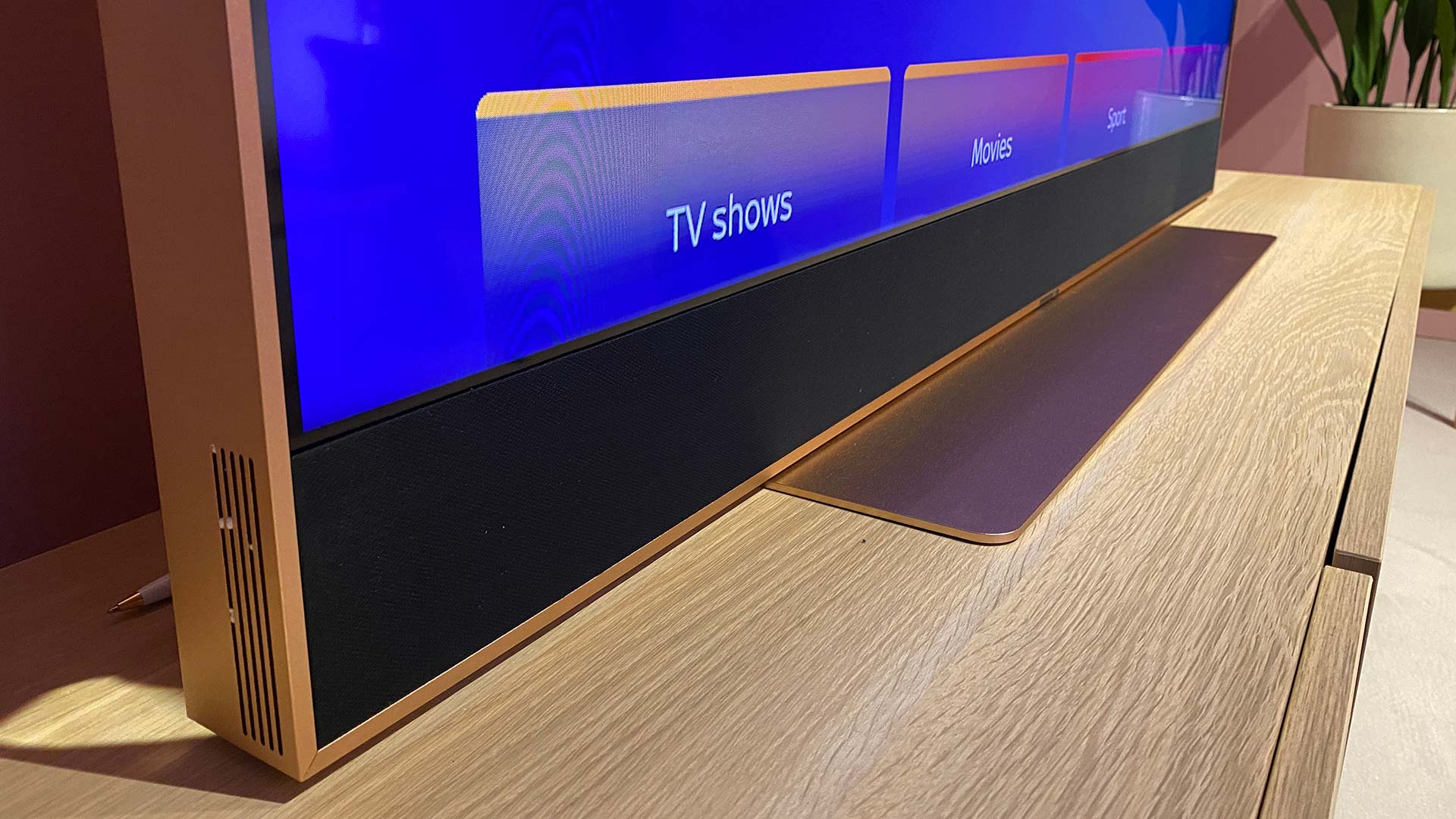
Ah yes, audio — here’s one area where the Sky Glass hardware beats the competition. The set has a built-in Dolby Atmos surround sound system consisting of three forward-facing and two upwards-firing speakers, plus a subwoofer. And it sounds great, with a heft that’s missing from most TVs. Speech is clear, distortion is well controlled at high volumes and the 360 surround does a good job of filling the room.
That said, bass performance is a little disappointing considering it has a subwoofer. You’ll get better results from a full 5- or 7-channel home cinema setup or even one of the best soundbars, such as the Sonos Beam 2. As a space-saving, all-in-one solution though, it’s to be praised.
Sky Glass review: Stream Puck
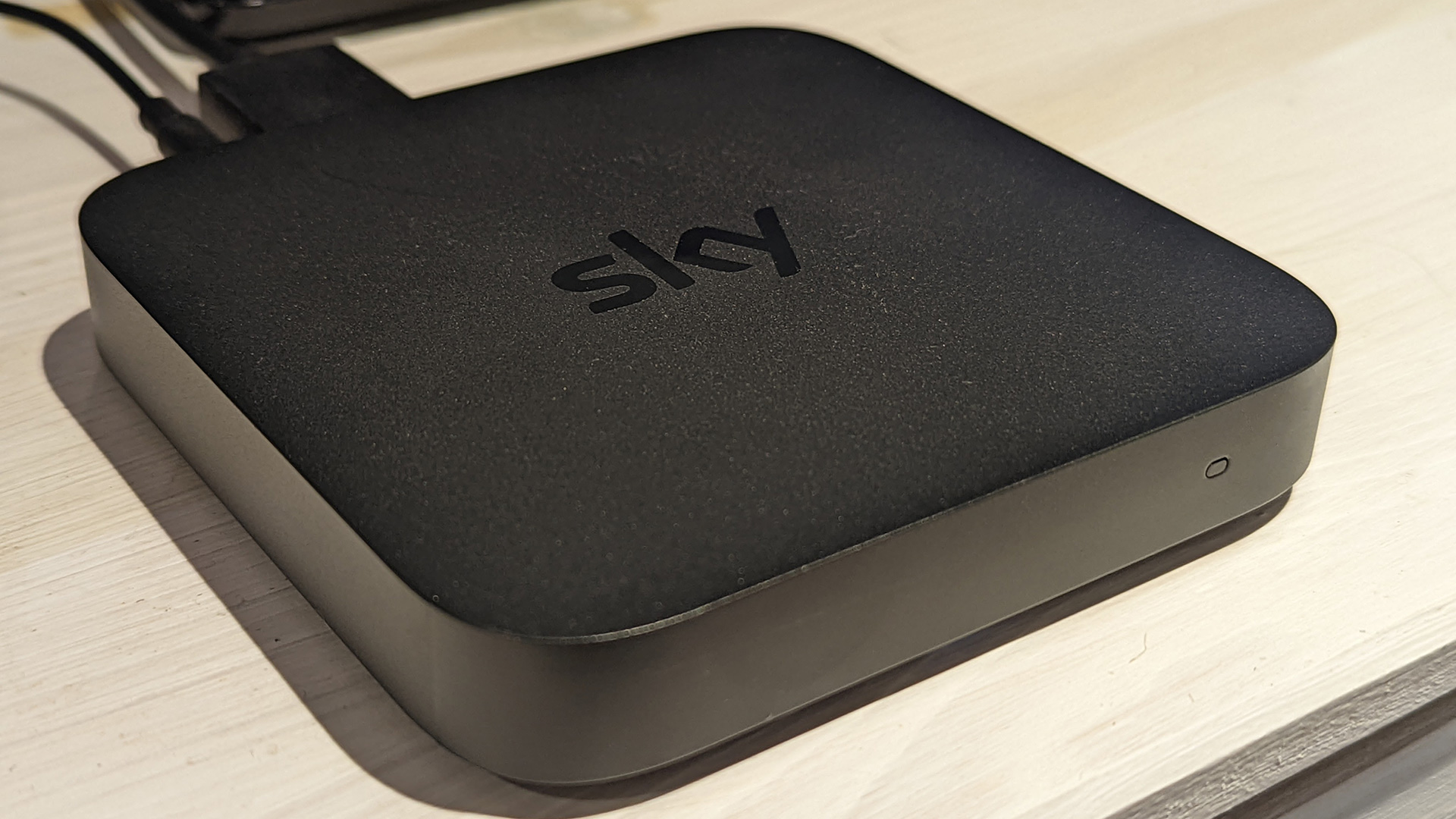
For an extra £10/month you can add Sky’s Stream Puck and enjoy the Sky Glass experience on any TV. This is both an advantage and disadvantage for Sky’s efforts to get Glass into people’s homes.
First, the positives: the box is sleek, albeit larger than a Roku or Fire TV streaming box, and very easy to use. Simply plug it in, connect it via HDMI to your TV and link it to Wi-Fi or Ethernet. Once set up, you’ll get all of the Sky Glass benefits, such as the clever integrated UI, but on another screen — which is good news if you already own one of the best TVs.
But it does beg the question of why Sky felt the need to build a TV at all. The Puck isn’t currently available as a standalone device, but it were then it would offer the best of both worlds, giving you the Sky Glass experience without the slightly below-par TV set.
Sky Glass review: Sustainability
Sky has always had a good record on sustainability and it proudly proclaims that Sky Glass is “the world’s first TV to be certified as a CarbonNeutral product.”
It’s delivered in recyclable packaging free of single-use plastics, is powered by renewable energy for its first year of use (presumably in terms of Sky’s Cloud services; it doesn’t come with free electricity or anything) and has several energy-saving settings including the auto-on/off 'Glance' feature that uses motion sensing to work out whether you’re watching or not.
In theory, Glance is a great feature. It's designed to wake the TV when you enter the room and displays personalised content on the screen based on your TV habits — almost like a screensaver. All you need to do to start watching is pick up the remote and it will dive straight into the home screen, without you needing to press a button.
There are further plans for this in terms of on-screen content, with talk of weather, news and artwork, that will help ensure your TV is not just a black screen in the middle of the most sociable room of the house.
That’s all admirable, however in my experience the motion-sensing side of things needs a bit more work; Sky Glass would regularly turn itself on randomly, even after I’d turned off the Wake Using Motion setting.
I suspect many of these incidents may be down to it thinking that it's heard someone saying "Hello Sky" even when they haven't done so, but it's quite annoying all the same.
Sky Glass review: Verdict
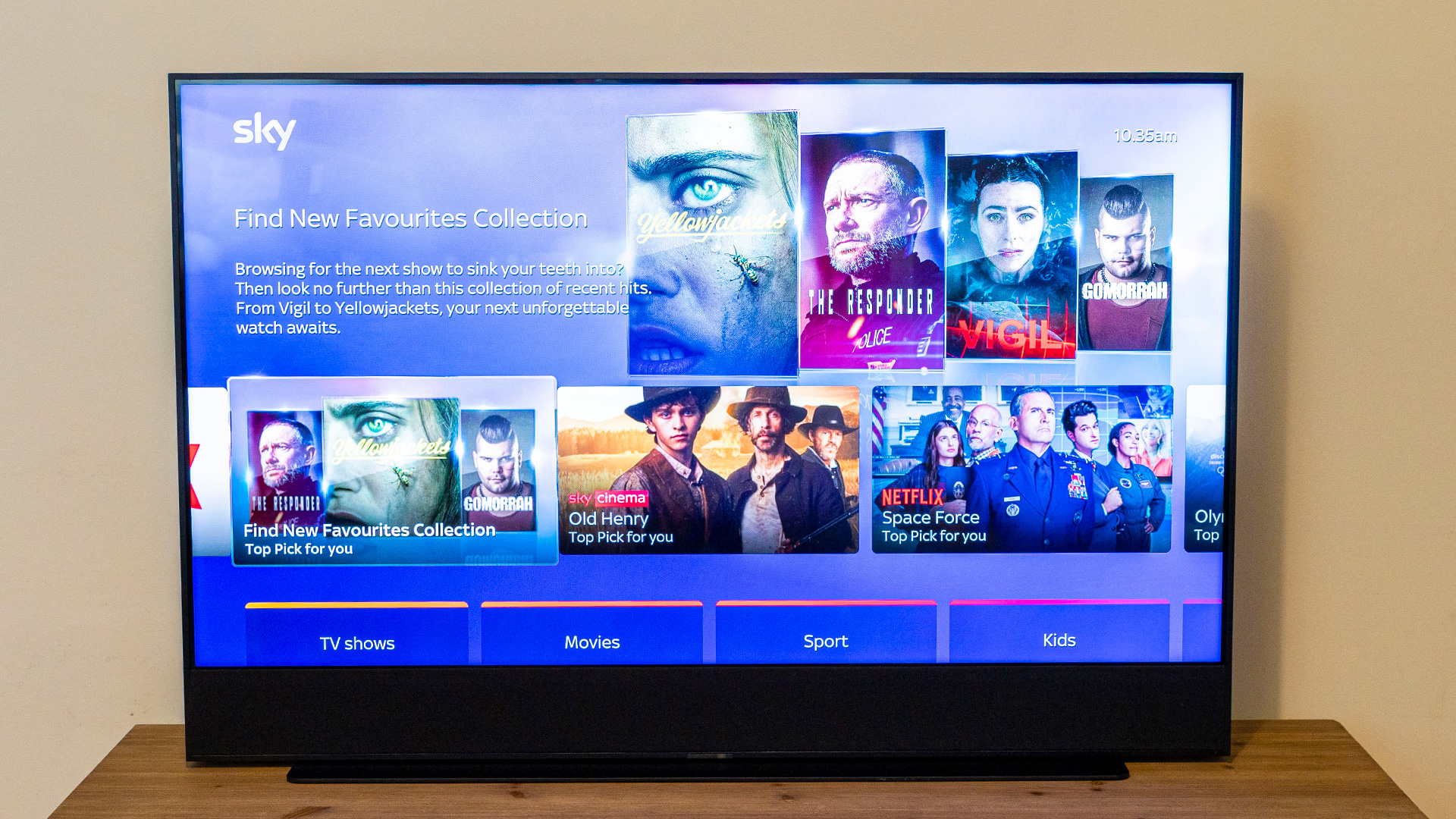
Sky Glass is an ambitious device that gets a lot right but a few things wrong and I have the feeling that the second version might be the one to wait for.
Crucially, its picture quality is on a par with good budget TVs rather than the very best 4K sets and while it sounds great, few people will buy a TV for audio performance alone. As a result, Sky Glass’ desirability rests on two factors: ease of use and interface.
On the first, it’s a definite winner: this really is a one-cable solution that could give you access to almost all of the world’s streaming content without the need for multiple devices and cables. If you value simplicity above everything — or are unable to install a dish on your house — Sky Glass is easy to recommend.
As far as user experience goes, it’s a mixed bag. Sky Glass has the bold aim of unifying content from live and on-demand services and it may well be that this is what the future of TV looks like; I certainly hope so, because when it works, it’s great. But at the same time, it’s not really unified — voice control only works with some content and not everything is available on-demand. Plus, the lack of a DVR means that if you miss a live show on certain channels, you’re stuck; Sky Q plus a soundbar and TV will still be a better option for many people. That said, if you don't already own a better TV set, Sky Glass is a good option.
If the Streaming Puck was available as a standalone device then that would be a true game changer, but as a whole package, Sky Glass falls just short of greatness.
Formerly Editor in Chief (U.K.) on Tom’s Guide, Marc oversaw all gaming, streaming, audio, TV, entertainment, how-to and cameras coverage, and was also responsible for the site’s U.K.-focused output. He is now U.K. Editor in Chief on TechRadar. Marc previously edited the tech website Stuff and has tested and written about phones, tablets, wearables, streaming boxes, smart home devices, Bluetooth speakers, headphones, games, TVs, cameras and much more. He also spent years on a music magazine, where his duties mainly involved spoiling other people’s fun, and on a car magazine. An avid photographer, he likes nothing better than taking pictures of very small things (bugs, his daughters) or very big things (distant galaxies). When he gets time, he also enjoys gaming (console and mobile), cycling and attempting to watch as much sport as any human can. He's also fallen in love with Wordle over the past six months and is the author of our today's Wordle answer column, in which he supplies hints and strategy tips for the mega-popular word game. Given he's completed every single Wordle so far and only lost once, and analyzed every Wordle answer in search of patterns, he's well qualified to help you safeguard your streak.
